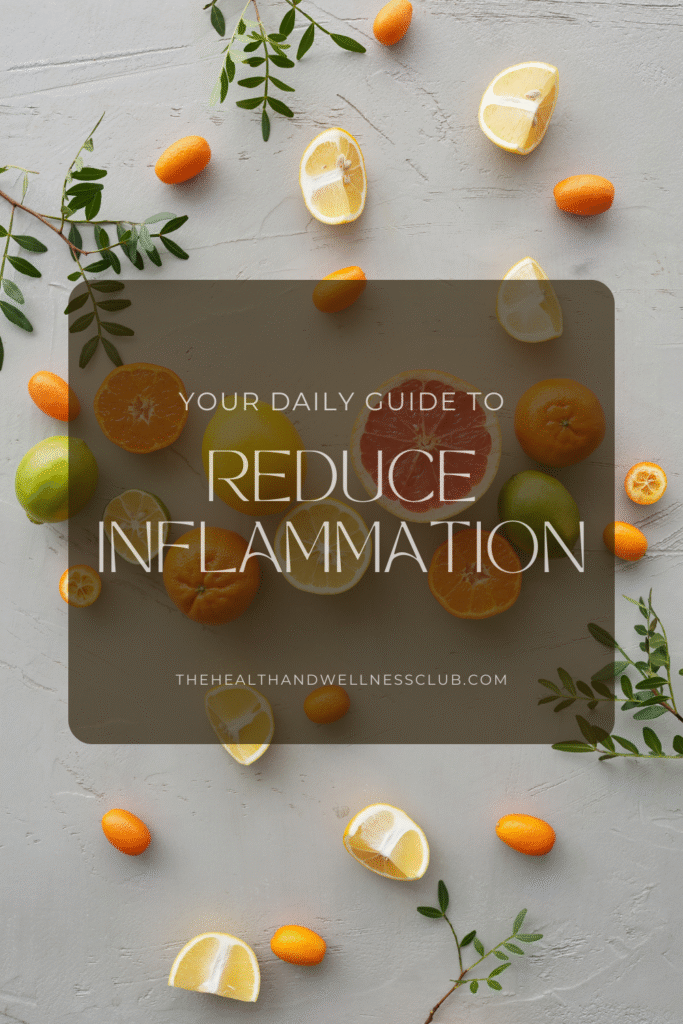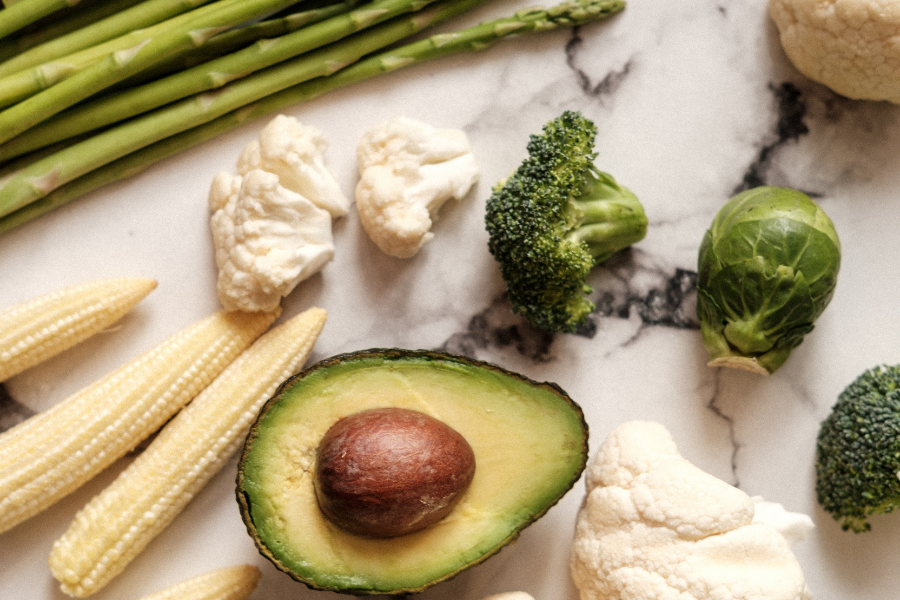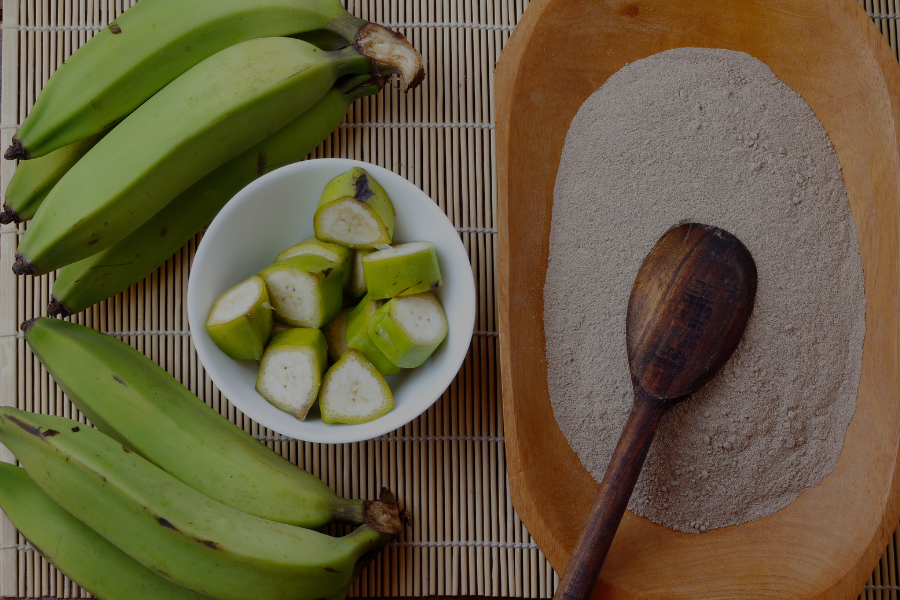Sometimes, the laundry list of symptoms that we simply become accustomed to managing are actually down to one larger underlying condition: inflammation. Learning how to reduce inflammation can significantly improve your overall health.
To name a few, you might be struggling with a whole host of symptoms: fatigue, body pain, insomnia, depression, anxiety, weight fluctuations, and frequent infections. These can often be alleviated when you reduce inflammation in your body.
If you suspect some of the health conditions you’re experiencing might be due to inflammation within your body, there are a number of ways you can counteract this.
Here are tips that can help reduce inflammation and set you on the path to improving your overall gut health in your daily life.
What Is Inflammation?
Inflammation isn’t always bad. It’s your body’s natural defense system kicking in when you’re injured or fighting off an infection. But when it sticks around too long—like a guest who doesn’t know when to leave—it can start damaging healthy cells and tissues. That’s when it becomes chronic, and that’s when it starts messing with your energy, your mood, your digestion, and even your risk for diseases like heart disease, diabetes, and arthritis
Steps to Reduce Inflammation
Step 1: Start Your Day with an Anti-Inflammatory Breakfast
Skip the sugary cereals and pastries. Instead, go for something that fuels your body and fights inflammation. Think:
- Chia seed pudding with sugar-free milk, Greek yogurt and topped with berries and nuts
- Egg and avocado toast on whole grain bread with a sprinkle of turmeric
- A smoothie with spinach, banana, flaxseed, and almond butter
Why? Berries are packed with antioxidants, chia and flax seeds are full of fiber and omega-3 fatty acids. Healthy fats like those in chia seeds, avocado and nuts help regulate inflammation. A study published in Missouri Medicine found that diets with healthy fats, with a lower omega-6 and higher omega-3 fatty acids composition, like olive oil and avocado oil (hello, avocado!) are linked to lower inflammation and better heart health. Another study in JAMA Internal Medicine showed that higher fiber intake—especially from natural plants-based source —was associated with lower levels of inflammatory markers like CRP and IL-6.
Step 2: Move Your Body—But Don’t Overdo It
Exercise is one of the best anti-inflammatory tools out there. It boosts circulation, reduces stress hormones, and helps regulate your immune system. But here’s the kicker: too much intense exercise without rest can actually increase inflammation.
Aim for 30 minutes of moderate movement most days—walking, yoga, strength training, swimming, or dancing in your living room all count. If you’re sore or tired, listen to your body. Rest is part of the healing process. This balance can help reduce inflammation.
Step 3: Gut Check—Feed Your Microbiome
Your gut is home to trillions of microbes that play a huge role in inflammation. When your gut is happy, your whole body feels better. When it’s out of balance, inflammation can skyrocket.
So how do you keep your gut in check?
- Eat more fiber: Veggies, fruits, legumes, and whole grains feed the good bacteria.
- Add fermented foods: Yogurt, kimchi, sauerkraut, and kefir are probiotic powerhouses.
- Limit ultra-processed foods: They feed the bad bacteria and promote inflammation.
A recent study showed that certain gut microbes can ease chronic pain and reduce inflammation—proof that your gut really is your second brain.
Step 4: Hydrate Like You Mean It
Water helps flush out toxins and keeps your cells functioning properly. Dehydration can actually trigger inflammatory responses in the body. Aim for 8–10 glasses a day, more if you’re active or live in a hot climate.
Tips: Add a slice of lemon or cucumber for a refreshing anti-inflammatory boost.

Step 5: Prioritize Sleep Like It’s Your Job
Sleep is when your body repairs itself. Skimping on it—even for a few nights—can increase levels of inflammatory markers like C-reactive protein (CRP). Chronic sleep deprivation? That’s a fast track to burnout and inflammation overload.
Create a wind-down routine: dim the lights, put your phone away, and try a calming tea or meditation. Aim for 7–9 hours of quality sleep each night to help reduce inflammation.
Step 6: Manage Stress (Yes, Really)
Stress is a major inflammation trigger. When you’re constantly in fight-or-flight mode, your body pumps out cortisol and other stress hormones that keep inflammation simmering.
You don’t have to become a monk. Just find what works for you:
- Deep breathing
- Journaling
- Nature walks
- Talking to a friend
- Listening to music
- Reading a book
- Meditation
- Yoga
Even 5 minutes of mindfulness a day can make a difference in reducing inflammation.
Step 7: Rethink Your Pain Relief
If you’re dealing with chronic pain, you might be reaching for muscle relaxants or painkillers. But long-term use can come with side effects and may not address the root cause. A systematic review in JAMA Network Open found that while muscle relaxants can help with certain types of pain, they’re not a long-term solution for inflammation.
Instead, consider natural anti-inflammatories like turmeric, omega-3s (from fatty fish, chia seeds or flaxseed), and magnesium-rich foods (like leafy greens and dark chocolate). Always talk to your doctor before changing your meds, of course.
Step 8: Build an Anti-Inflammatory Plate
An anti-inflammatory diet is a key to an inflammation-free and healthy body. A simple rule is to avoid ultra-processed food and here’s a simple formula to follow at every meal:
- Half your plate: Colorful veggies (broccoli, peppers, spinach, carrots)
- A quarter: Lean protein (salmon, tofu, beans, chicken)
- A quarter: Whole grains (quinoa, brown rice, farro)
- Add healthy fats: Olive or avocado oil, nuts, seeds, avocado
This kind of balanced, whole-foods approach helps stabilize blood sugar, reduce oxidative stress, and keep inflammation in check.
Step 9: Supplement Smartly (If Needed)
Sometimes food isn’t enough—especially if you have deficiencies. Common anti-inflammatory supplements include:
- Omega-3 fatty acids: Found in fish oil or algae oil
- Vitamin D: Especially if you don’t get much sun
- Curcumin: The active compound in turmeric
- Probiotics: To support gut health
Emerging research also points to Nicotinamide Mononucleotide (NMN) as a promising supplement. A clinical trial published in Nature found that NMN improved insulin sensitivity and mitochondrial function in women with prediabetes, suggesting anti-inflammatory benefits.
Again, check with a healthcare provider before starting anything new.
Step 10: Be Consistent, Not Perfect
Here’s the truth: you don’t have to overhaul your life overnight. Inflammation builds up over time, and it takes time to reverse. But every small step you take adds up.
Start with one or two changes. Maybe it’s swapping your breakfast, going for a walk after dinner, or adding a handful of spinach to your smoothie. The key is consistency.
Final Thoughts
Reducing inflammation isn’t about restriction—it’s about nourishment. It’s about giving your body what it needs to thrive, not just survive. When you eat well, move often, sleep deeply, and manage stress, you’re not just reducing inflammation—you’re reclaiming your energy, your mood, and your joy.
So go ahead. Start today. Your body will thank you tomorrow.





